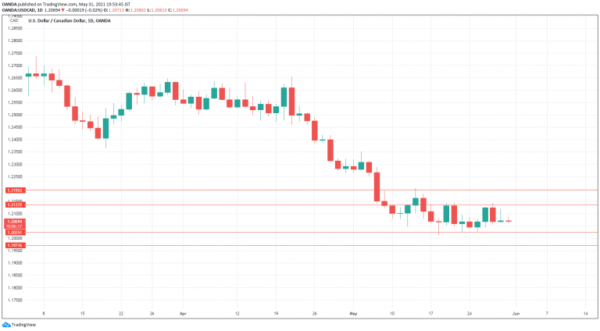The Canadian dollar is almost unchanged at the start of the week. In the European session, USD/CAD is trading at 1.2064, down 0.06% on the day. US markets are closed for Memorial Day and there are no US events, so we can expect a quiet day for the pair. Canada will release the Raw Material Price Index for April (12:30 GMT), which posted a strong gain of 2.3% in the previous release.
Canada GDP expected to climb
Canada releases GDP on a monthly basis. In February, the economy expanded at a rate of 9.0% (YoY). Another strong gain is projected for March, with a consensus of 6.7% (12:30 GMT). These readings may appear impressive, but it should be noted that they are in comparison to figures from a year ago, when Covid was at its height and caused a steep economic downturn.
Canada has had a tough time in the battle against Covid-19, and has lagged behind the US and the UK. With Covid numbers gradually falling, the economy is slowly being reopened. Given the lukewarm economy, it was somewhat surprising that the Bank of Canada was the first major central bank to announce a tightening in policy. With the US and UK economies heating up, the Fed and BoE may well follow the BoC example and taper their QE programmes. The BoC has signalled that its key interest rate could rise above the current 0.25% in late 2022 and this hawkish tone has contributed to a stronger Canadian dollar.
In the US, another inflation indicator was unexpectedly strong. The Core PCE Index, which is the Federal Reserve’s preferred inflation gauge, jumped 3.1% in April, up strongly from 1.8% and above the forecast of 2.9%. Earlier in May, the US dollar jumped after April CPI hit a 13-year high. If investors feel that higher inflation is not transient, as the Fed has been insisting, then speculation will rise over a potential taper of QE, which could provide a boost for the US dollar this week.
USD/CAD Technical
- USD/CAD faces resistance at 1.2137 and 1.2195
- The pair is testing support at 1.2025. Below, there is support at 1.1971













